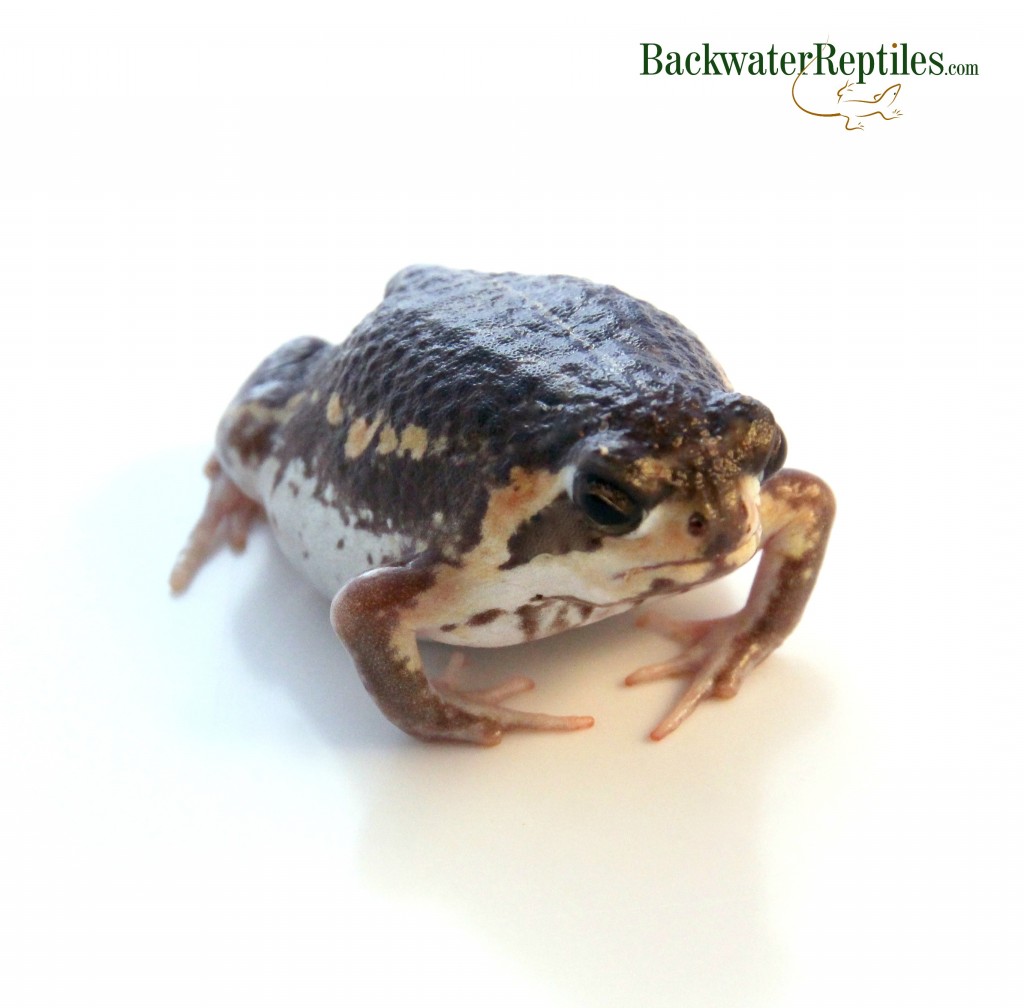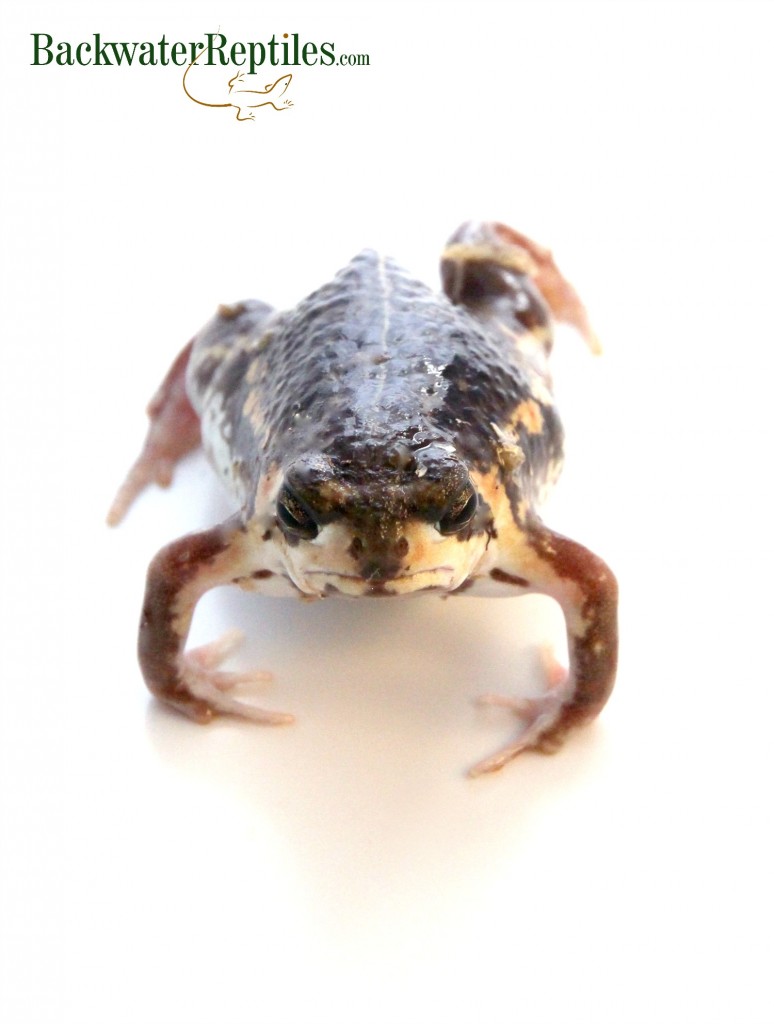Are you familiar with the meme of the “Grumpy Frog?” It’s usually a variation of this picture with text indicating that the frog is unhappy in some way.
If you ever wondered what type of frog Grumpy Toad actually is, you’re in luck! Backwater Reptiles just got in a rare batch of these frogs, which are commonly called Rain Frogs and we’re going to tell you all about them in this post.
There are actually several Rain frog species that appear in the memes, but Backwater Reptiles has a species called the Mozambique Rain Frog (Breviceps mossambicus). They are also known as the Flat-faced Frog due to their squashed-looking faces.

These comical little frogs are balloonish, round, squat-figured amphibians with toes that face inward (i.e they are pigeon-toed). Their manner of walking, grumpy-looking features, and overall compactness generally remind us of bulldogs which makes them very comical, yet aesthetically-appealing pets.
We should also mention that even though these frogs have been nicknamed “Grumpy Frogs,” in reality they are very docile amphibians. They don’t really bite, move pretty slowly, and overall don’t mind being handled. They are not only cute to look at, but they are easy to keep as well.
Here’s a short video we took of one of our Mozambique Rain Frogs on a stroll, just to give you a better idea of how silly these little critters actually are when it comes to locomotion.
As its name suggests, the Mozambique Rain Frog hails from Mozambique, but is also found in other African countries. It’s natural habitat is dry or moist savannah grasslands, scrublands, and rural or pastoral gardens.
When the weather is dry, the Rain Frog will hide under rocks or small crevices in or around tree roots. While hidden, it will eat small invertebrates as an ambush predator. When rainfall occurs, winged termite swarms will emerge and rain frogs will come out from their hiding places en masse to feed on all the termites.

While the Mozambique Rain Frog is listed by the IUCN as a species of “least concern” due to its widespread range throughout Africa, they are actually pretty uncommon in the reptile/amphibian hobby world.
These frogs also have very distinct calls. Unlike a traditional frog’s croak or clicking calls, the rain frog lets out a small noise that sounds like a squeak, squeal, or kitten’s cry. It can be very amusing, so long as the frog is not crying out in distress.

When keeping a Mozambique Rain Frog in captivity, keep in mind that these frogs are burrowers. They are not jumpers or climbers and would much prefer having horizontal tank space to walk around in than vertical space as they won’t climb branches or trees. To satisfy the burrowing habits of the rain frog, make sure to coat your enclosure in a substrate that retains moisture and also holds its shape. We also recommend that there are no heavy decorative items in the enclosure since the frog might burrow underneath it and accidentally injure itself. Plastic hide rocks and a small fake plant or two should be suitable.
Since the natural diet of the Mozambique Rain Frog consists of small invertebrates, we feed ours crickets, dubia roaches, meal worms, and occasional wax worms.

As we previously mentioned, Backwater Reptiles currently has Mozambique Rain Frogs for sale. We just received a shipment of these humorous little frogs. They are relatively hard to come by in the reptile/amphibian pet trade, so we recommend buying yours now if you’re interested before they sell out since we likely won’t get any more until next breeding season.

